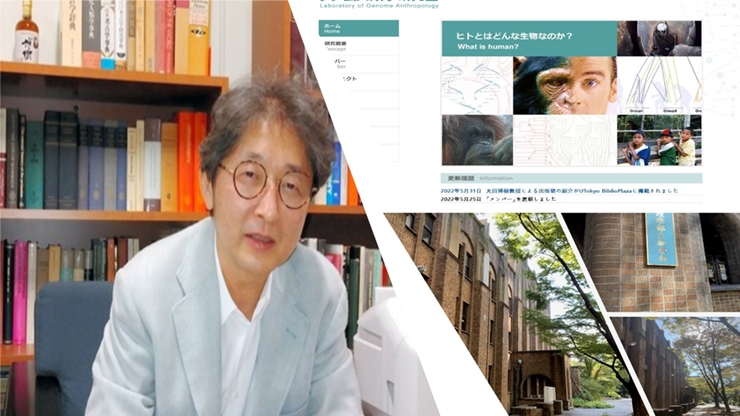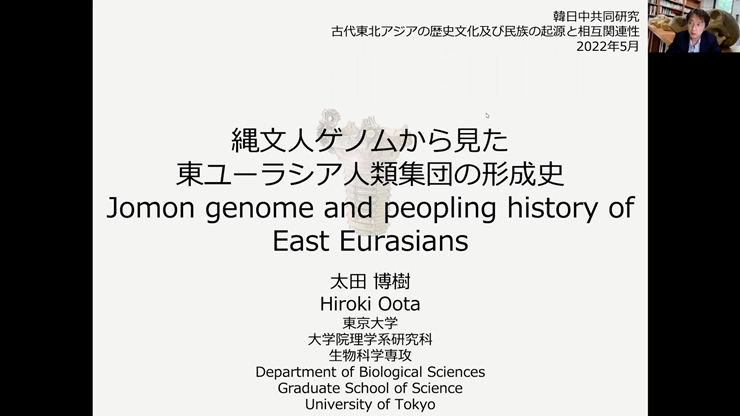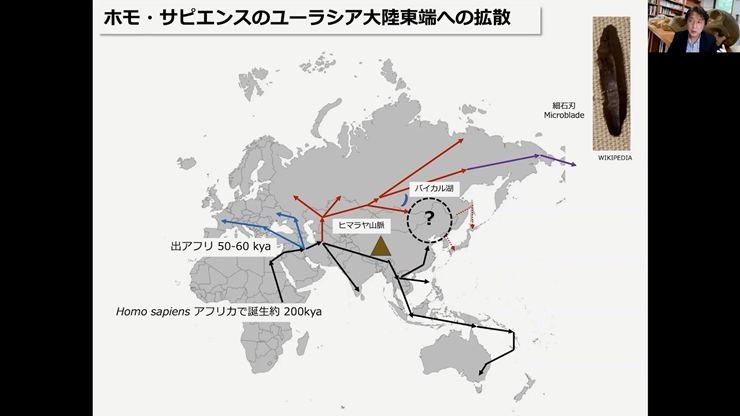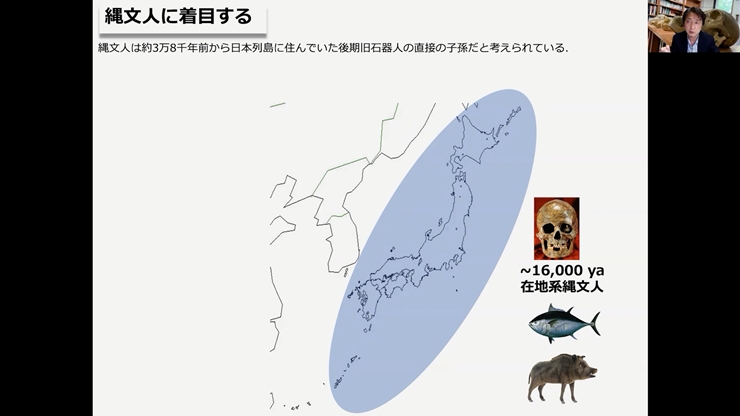재단활동
 > 활동&행사 > 재단활동
> 활동&행사 > 재단활동오오타 히로키 교수(도쿄대) ㅣ조몬인(縄文人)의 게놈과 일본인의 기원
조몬인(縄文人)의 게놈으로 본 동유라시아 인류집단의 형성사
일본 도쿄대학(東京大學) 게놈인류학연구실(ゲノム人類学研究室) 주임 오오타 히로키(太田博樹) 교수의 특별강연 “조몬인(縄文人)의 게놈으로 본 동유라시아 인류집단의 형성사(縄文人ゲノムから見た東ユーラシア人類集団の形成史)”가 6월 10일 금요일에 있었다.

강연에서 오오타교수는 조몬인의 게놈을 통해 동유라시아 인류집단의 형성을 분석하고, 일본인의 기원을 밝혔다. 일본인은 16,000년 전부터 일본열도에 존재했던 조몬인과 3,000년 전 요서에서 한반도를 거쳐 일본으로 도래한 야요이인의 혼합으로 형성되었다고 설명하고 있다.

縄文人のゲノムを通じて東ユーラシア人類集団の形成を分析した。日本人は16000年前から日本列島に存在した縄文人と3000年前の遼西から韓半島を経て日本に到来した弥生人の混合で形成された。

Anatomically modern humans reached East Asia more than 40,000 years ago. However, key questions still remain unanswered with regard to the route(s) and the number of wave(s) in the dispersal into East Eurasia. Ancient genomes at the edge of the region may elucidate a more detailed picture of the peopling of East Eurasia. Here, we analyze the whole-genome sequence of a 2,500-year-old individual (IK002) from the main-island of Japan that is characterized with a typical Jomon culture. The phylogenetic analyses support multiple waves of migration, with IK002 forming a basal lineage to the East and Northeast Asian genomes examined, likely representing some of the earliest-wave migrants who went north from Southeast Asia to East Asia. Furthermore, IK002 shows strong genetic affinity with the indigenous Taiwan aborigines, which may support a coastal route of the Jomon-ancestry migration. This study highlights the power of ancient genomics to provide new insights into the complex history of human migration into East Eurasia.



 fd759d46e0945544217127ea98b2ad90.webp
fd759d46e0945544217127ea98b2ad90.webp